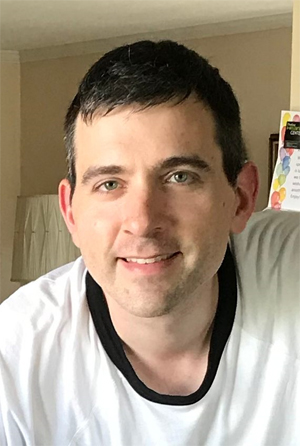Ohio University alumnus Ryan Schwiebert is one of three generations of mathematicians continuing the tradition of inquiry-based teaching.
With OHIO Emeritus Professor Gene Kaufman, he edited a revised edition of An introduction to Analytic Functions. The original book was published in 1959, and Kaufman was the last Ph.D. student of the book’s original author John Sheridan Mac Nerney.
Schwiebert is a Math Department super alum, having earned three math degrees: ’05 B.S. with an East Asian Studies Certificate, ’07 M.S. in ’07, and ’11 Ph.D. He is now a software engineer at Seegrid.
“When first published in 1959, this book was the basis of a two-semester course in complex analysis for upper undergraduate and graduate students. J. S. Mac Nerney was a proponent of the Socratic, or ‘do-it-yourself’ method of learning mathematics, in which students are encouraged to engage in mathematical problem solving, including theorems at every level which are often regarded as ‘too difficult’ for students to prove for themselves,” according to the book’s webpage.
“Accordingly, Mac Nerney provides no proofs. What he does instead is to compose and arrange the investigation in his own unique style, so that a contextual proof is always available to the persistent student who enjoys a challenge. The central idea is to empower students by allowing them to discover and rely on their own mathematical abilities. This text may be used in a variety of settings, including: the usual classroom or seminar, but with the teacher acting mainly as a moderator while the students present their discoveries, a small-group setting in which the students present their discoveries to each other, and independent study.”
Kaufman and Schwiebert have updated the book and composed it into LaTeX, but the organization of content has been strictly preserved.
See Schwiebert’s blog, which is targeted at university students and graduating high school seniors:
I came from a small town, and after I learned about other kids graduating from my high school who were interested in careers in mathematics, I wanted to help out any way I could. When I was their age I didn’t have a whole lot of guidance, and I know where they’re coming from. Organizing this into a blog seems like the most efficient way to get the advice out there and use it.
Q&A with Ryan Schwiebert
Q: Who were your favorite professors and how did they make an impact on your life?
Wow! I couldn’t pick favorites… not even limiting myself to profs in the math department. But if I have to mention one, it should be Gene Kaufman for his role in preparing me for real mathematics while I was an undergrad. Part of the reason I wanted to work with Gene on this project is that I had experienced the effectiveness of the teaching method he inherited from Mac Nerney firsthand. My later profs taught me a lot of other things about mathematics, but I don’t know if I would have gotten that far without Gene’s classes.
Q: Do you still keep in touch with any of your faculty?
Yes, for sure. If it’s not just catching up, it’s bouncing some idea I had off them, or telling them about a project I was involved in that I felt was interesting, or involved something I learned from them. Or, as in the case of the book, we could be collaborating on a project!
Q: What are your favorite OHIO memories?
This is harder than you might think: it’ll probably be a bit random.
- Walking around downtown and around the greens rain or shine.
- Warner’s dorm movie night.
- Climbing some huge hill at 2 a.m. with 100 other people to see an epic meteor shower.
- Breaking my hand blocking a kick in karate class on my 21st birthday.
- Those cherry trees in blossom along the river.
- Watching a squirrel climb the side of a tree with a pizza slice bigger than itself in its mouth. Only in Athens…
Q: What’s the one thing you would tell a new OHIO student not to miss?
Don’t miss class if you can help it: you’re paying for it. And enjoy your leisurely life on a green campus while you can. There are a zillion little niches in and around campus waiting for you to discover them. Try to create some positive experiences that you’re going to remember for a long time.





















Comments